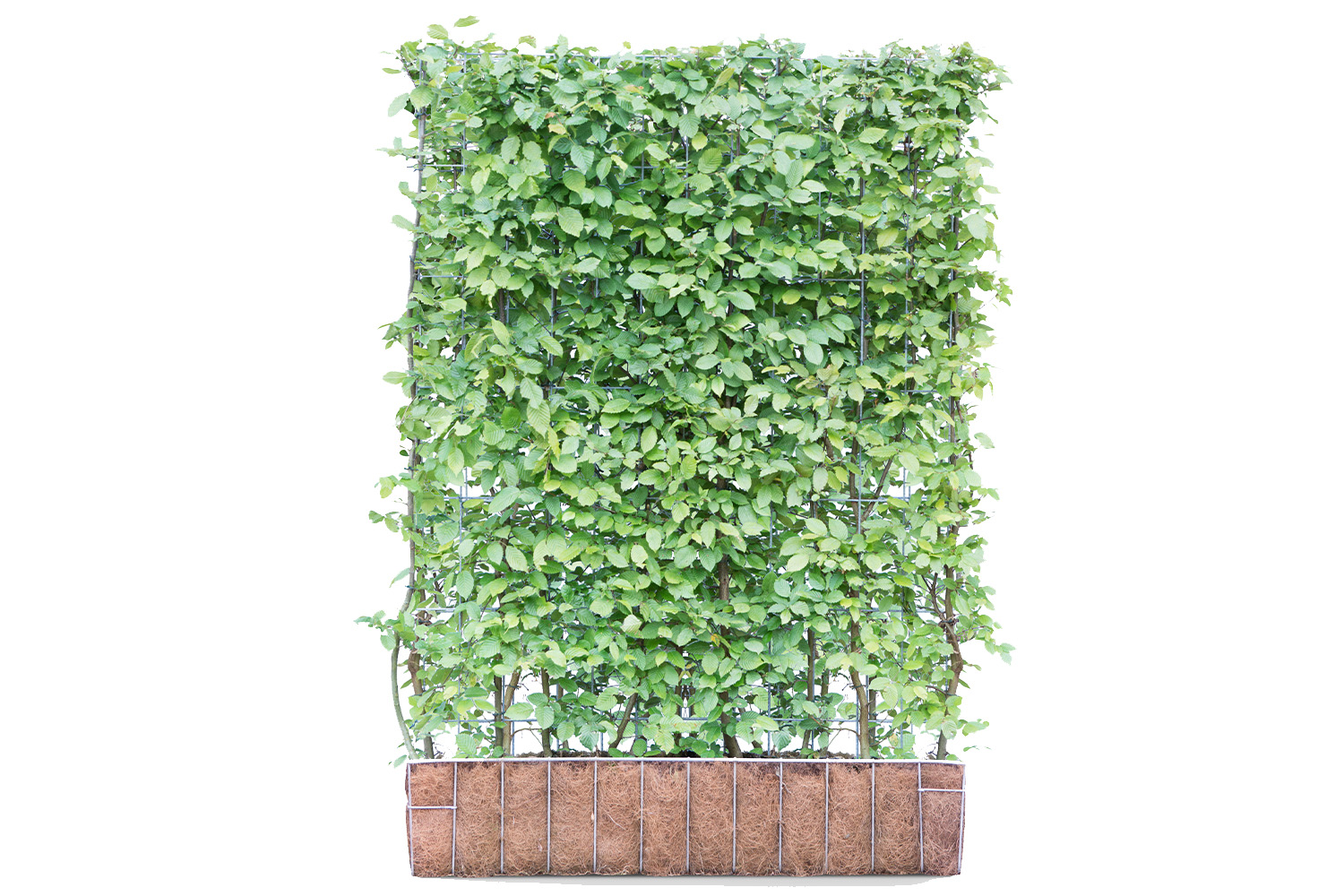Green Screen in the spotlight: Carpinus betulus
13 October 2023One of the best ways to improve the aesthetics and functionality of yard fencing is by installing a Green Screen instant hedge. Hedges not only serve as natural boundaries but also contribute to the ecology of the environment. An excellent choice for a hedge is Carpinus betulus, or hornbeam. This hedge species offers numerous advantages, ranging from its lush green leaves to its eco-friendly properties.
Aesthetic and functional
Carpinus betulus is known for its glossy green leaves and dense, compact growth habit. Delicate, inconspicuous flowers appear in spring, followed by bright green leaves that colour beautifully to warm shades of yellow and orange in autumn. This natural beauty adds a touch of elegance to any garden. Hornbeams absorb carbon dioxide and release oxygen, positively impacting the air quality in the immediate environment. This can be especially pleasing when the Green Screen hedge is placed in a busy environment such as in the city or near an industrial area.

Adaptability and ease of maintenance of Carpinus betulus
The Carpinus betulus hedge is a versatile species. Both for creating a sleek formal hedge or a more natural, loose look, this hedge is suitable. The species can be easily pruned and shaped to achieve the desired shape and height. The hedges thrive in a variety of soil types and are generally resistant to common garden diseases. Once well established, they require minimal care and can last a long time. Hornbeam is resistant to a variety of weather conditions, including frost, making it an excellent choice as a yard border in cold climates.
Bird-friendly Instant Green Screens
Hornbeam Green Screens not only provide privacy and beauty for the outdoor space, but also provide a welcome refuge for birds. Hornbeams are known for their dense branching, which becomes even more lush with regular pruning. Thanks to this stable network of branches, birds find protection from predators such as cats here. In addition, the hedge is a safe place to hatch their eggs and raise their young. Moreover, the fruits of hornbeams, although too small and dry for human consumption, are a real treat for birds. This natural food source attracts a variety of bird species, making the property boundary also a lively oasis for these animals.

Difference from common beech
Carpinus betulus is sometimes confused with the common beech for hedges (Fagus sylvatica). An important distinction lies in leaf retention. Carpinus betulus loses its leaves in autumn, while Fagus sylvatica retains the withered leaves on the plant throughout the winter. The new leaves of Carpinus sprout earlier in spring. In terms of soil type preference, there is also a difference: Carpinus thrives better on clay soils, while Fagus sometimes struggles to catch on in heavy soils. Another advantage of Hornbeam is its faster growth and cost-effectiveness.
Carpinus betulus is available in heights of 1.55 metres. View the points of sale here.



